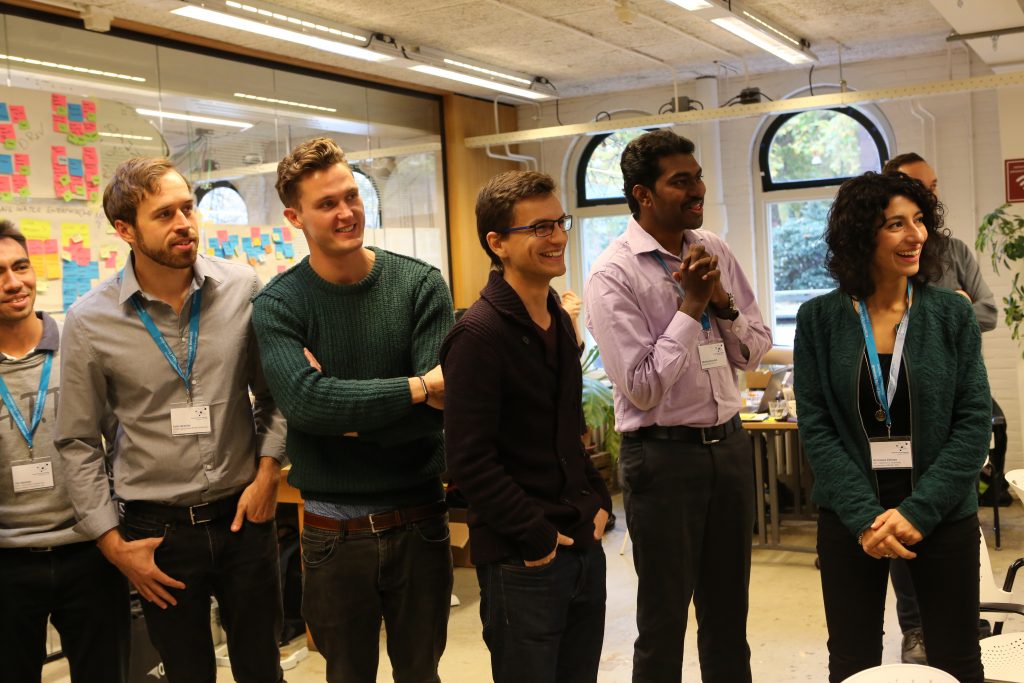
“Small is beautiful”, these words from Joseph Schumpeter, one of the most influential management thinkers of the 20th century, have always resonated with me. That’s why I love to work with entrepreneurs on developing their ventures further. And often I hear that these organizations should stay small (which in a way I agree with). They should not become one of these mammoth multinational corporations plagued with bureaucracy or office politics. For entrepreneurs, the game is simple, as they are already agile without too many processes. So let’s keep it that way.
So, all this fuzz about reinventing organizations, ensuring engagement of employees or becoming future proof does not apply to them. In the past months, I have been involved in a number of workshops around future proof organizations with founders of small companies and all have had an interest in this topic.
Let me share with you some of these learnings from the Siemens Stiftung workshop that involved a week full with almost 50 entrepreneurs from all over the world belonging to the empowering people. Network.
Purpose driven
Whether you are alone in your company, with 5 employees, 30 or 100000, the purpose of your endeavour, the culture and values you establish in your organization are always a matter of debate and reflection. In small organizations, values are often not well articulated or implicitly understood, and therefore rather difficult to communicate. These values are inherently linked to the values externalised by the founders. Why is this important? Because small organizations eventually grow and hire. Having a well-articulated purpose, with associated values that are embedded within the organization is a critical factor to be able to hire the right people and on-board them with success.
Autonomy
A high sense of autonomy is directly related to a higher engagement of employees (going back to self-determination theory). Various levels of autonomy can be provided in organizations and an extreme form of autonomy is self-organization. Self-organization does not mean the absence of rules and that everybody does whatever they want. Or that everybody will be comfortable with such a system, which is well explained in this article from the Corporate Rebels. One especially needs clarity in domains, roles and associated people to be able to implement more decentralised decision making.
For instance:
Domain: Sales
Role: Maintain good relationships with clients
Person: Nicolas
In a small organization, this functional mapping is often not clear or everybody is doing everything (which is not great in terms of accountability). Furthermore, even a small organization operates in a certain context and culture. When your audience is really international (like it was in the empowering people. Workshop) with all continents represented, you often get a “it cannot work in my country” type of reaction. For me, I find it a fantastic trigger to engage in a conversation on how much “self-organization” would be suitable in this specific context. Increasing autonomy is possible in every context, how much you can implement in a given context is what changes.

Leadership
Entrepreneurs want to scale (often) and while they might not experience disengagement of their limited number of employees yet, they will if they apply similar management techniques used by their predecessors now in large corporations. They have the opportunity to try something else, albeit that they are aware of it.
It is also a question of leadership. Founders of start-ups might find themselves really open and agile in the early stage of their venturing. But how are they going to behave when growing? How are they going to manage increasing complexity in business processes or in HR management? More rules, more centralised decision making? Or walking the path of future proof organizations towards more autonomy and using the power of intrinsic motivation?

This is what the Siemens Stiftung empowering people. Workshop was all about – showing founders of social enterprises how their organizations could become future proof while implementing the first steps now.